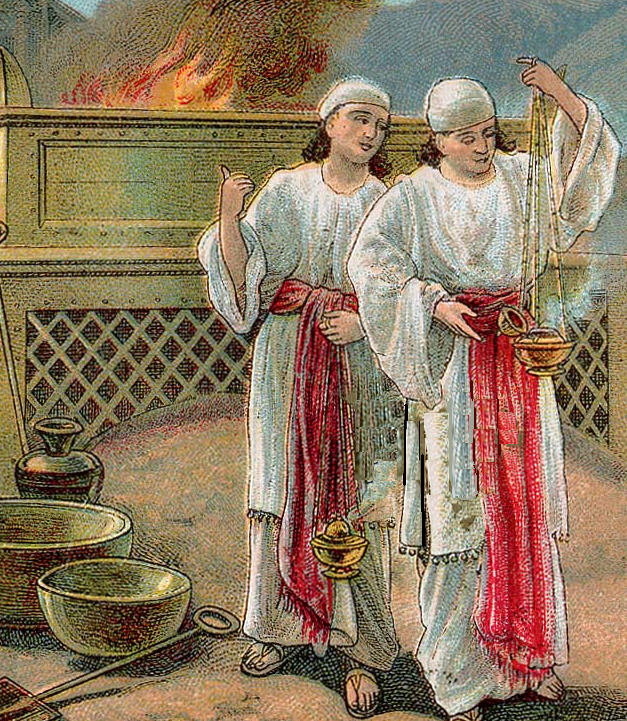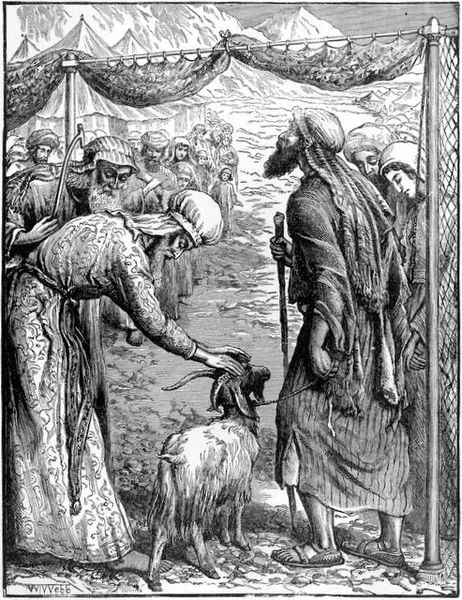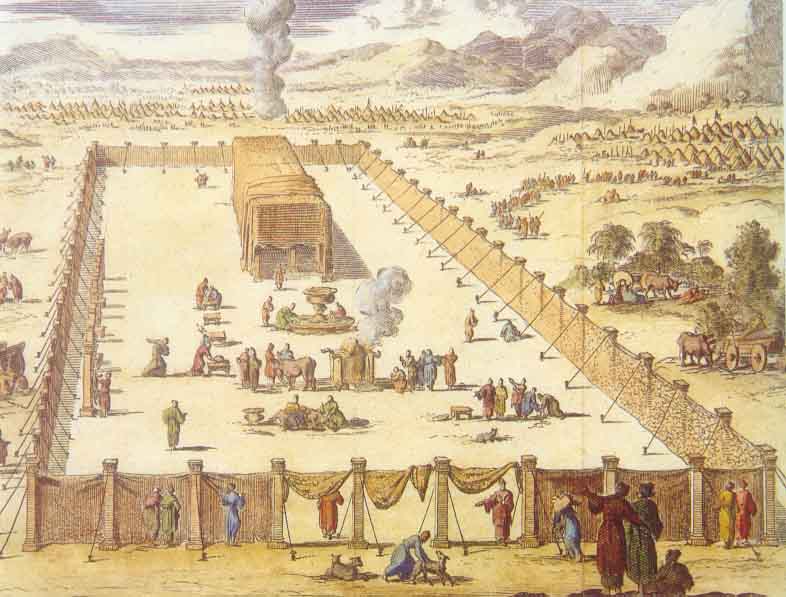וַיִּקְרָא
Leviticus
The Hebrew name for the Book of Leviticus contains the first word in the Masoretic Text (MT) of the book namely " waj-jiqra" which means, "And he called..."



Introduction
The Book of Leviticus is the third book of the Torah and of the Old Testament.
Scholars generally agree that it developed over a long period of time, reaching its present form during the Persian Period between 538–332 BC.
Most of its chapters (1–7, 11–27) consist of God's speeches to Moses, which God commands Moses to repeat to the Israelites.
This takes place within the story of the Israelites' Exodus after they escaped Egypt and reached Mount Sinai (Ex 19:1).
The Book of Exodus narrates how Moses led the Israelites in building the Tabernacle (Ex 35–40) with God's instructions
(Ex 25–31).
Then God tells the Israelites and their priests how to make offerings in the Tabernacle and how to conduct themselves while camped around the holy tent sanctuary. Leviticus takes place during the month or month-and-a-half between the completion of the Tabernacle (Ex 40:17) and the Israelites' departure from Sinai (Numbers 1:1, 10:11).
Structure
I. Laws on sacrifice (1:1–7:38)II. Institution of the priesthood (8:1–10:20)III. Uncleanliness and its treatment (11:1–15:33)IV. Day of Atonement: purification of the tabernacle from the effects of uncleanliness and sin (ch. 16)V. Prescriptions for practical holiness (the Holiness Code, chs. 17–26)VI. Redemption of votive gifts (ch. 27)
Date
The majority of scholars have concluded that the Pentateuch received its final form during the Persian period (538–332 BC). Nevertheless, Leviticus had a long period of growth before reaching that form.
The rest of this comprehensive Wikipedia article on the book can be read here.
An extract from BHFA Volume 5
Leviticus 16:8b
לַיהוָה וְגוֹרָל אֶחָד לַעֲזָאזֵלa גּוֹרָל אֶחָד
for Azazel one and a lot for Yahweh one a lot
ESV for Azazel.KJB for the scapegoat.
NIV for the scapegoat.
YLT for a goat of departure;
CSB for an uninhabitable place,
NLT to the wilderness of Azazel.
CEV to the demon Azazel.
The word "azazel" appears four times in the Hebrew Bible, all of which are in this chapter. Here in verse 8, in verse 10 (twice), and in verse 26. It has two possible meanings.
"An evil spirit of the wilderness to which a scapegoat was sent by the ancient Hebrews in a ritual of atonement."
"In the Bible, the proper name Azazel appears in association with the scapegoat rite; the name represents a desolate place where a scapegoat bearing the sins of the Jews during Yom Kippur was sent."
Further reading
A comprehensive article about the word "Azazel," can be found in Wikipedia by clicking here
AN EXTRACT FROM BHFA VOLUME 5
Leviticus 21:7b
וְאִשָּׁה גְּרוּשָׁה מֵאִישָׁהּa
from her husband driven out and a woman
KJB a woman put away from her husband:
NASB a woman divorced from her husband;
ESV a woman divorced from her husband,
NLT a woman who is divorced from her husband,
NIV women .... divorced from their husbands,